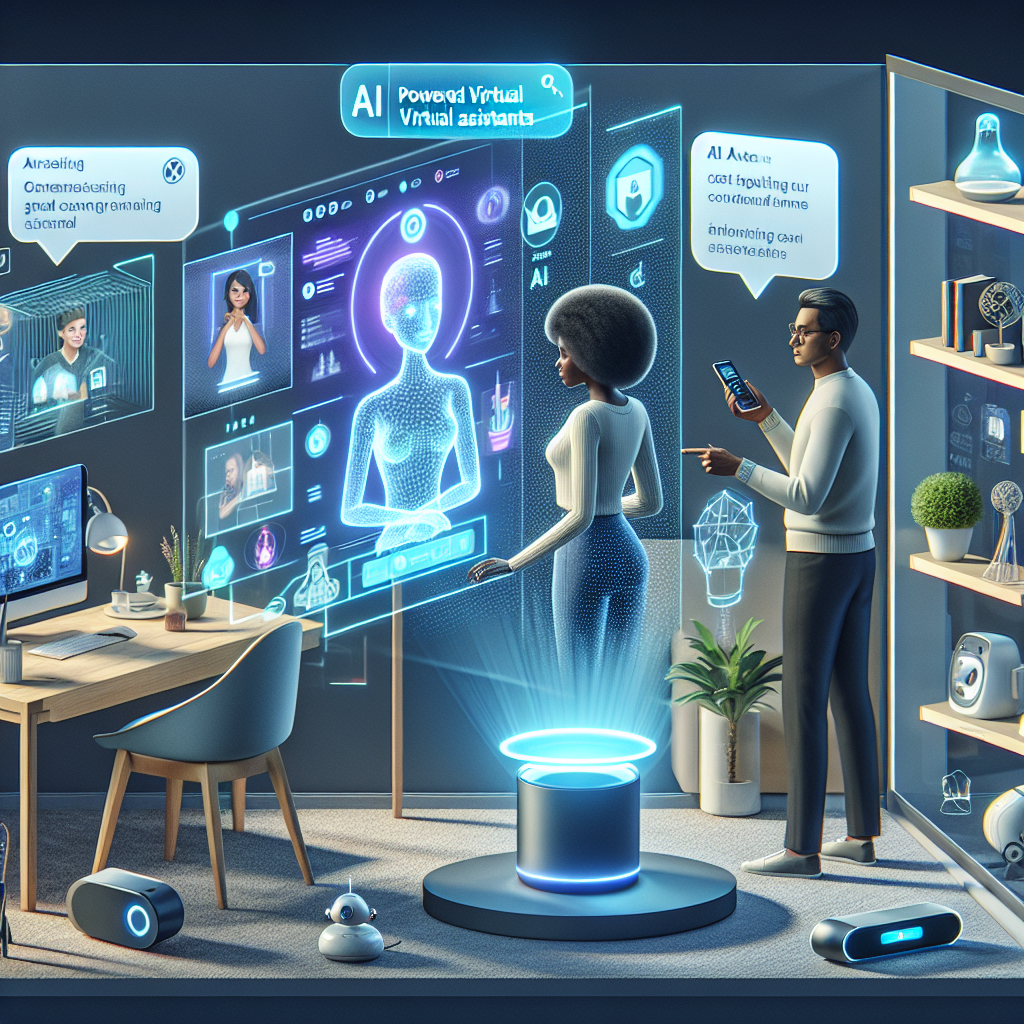AI-Powered Virtual Assistants: The Best Tools for Work and Home in 2025
Introduction
In 2025, AI-powered virtual assistants have become indispensable tools both at work and at home, revolutionizing the way individuals manage tasks and interact with technology. These advanced assistants leverage cutting-edge artificial intelligence to offer personalized support, streamline operations, and enhance productivity. Equipped with capabilities ranging from natural language processing and machine learning to emotional intelligence, they can understand and predict user needs with remarkable accuracy. As technology continues to evolve, these virtual assistants are not just reactive but also proactive, offering insights and managing tasks in increasingly intuitive ways. Whether it’s scheduling meetings, managing emails, automating home systems, or providing real-time information, AI-powered virtual assistants in 2025 are more than just tools; they are collaborative partners in managing the complexities of daily life and work.
AI-Powered Virtual Assistants: The Best Tools for Work and Home in 2025
In the rapidly evolving landscape of technology, AI-powered virtual assistants have emerged as indispensable tools for both work and home environments. As we step into 2025, these intelligent assistants are not just novelties but essential instruments that enhance productivity, streamline tasks, and facilitate a more organized lifestyle. The integration of advanced artificial intelligence into everyday devices has revolutionized how we interact with our surroundings, making the virtual assistants of 2025 more intuitive, interactive, and indispensable than ever before.
At the core of their functionality, AI-powered virtual assistants leverage cutting-edge technologies including natural language processing, machine learning, and predictive analytics. This allows them to understand and anticipate the needs of users with remarkable accuracy. For professionals, this translates into a more efficient workflow where scheduling, communication, and data management are handled seamlessly. Virtual assistants can now sync with multiple calendars, set reminders, prioritize emails, and even suggest the best times for meetings based on the analysis of participants’ past behaviors and preferences.
Moreover, the scope of these assistants extends beyond mere scheduling. They are now capable of managing more complex tasks such as project management and customer relationship management. By integrating with various business tools and platforms, they can keep track of project timelines, budget allocations, and resource management, effectively acting as an automated project manager. This not only saves time but also reduces the likelihood of human error, ensuring that business operations are smooth and efficient.
Transitioning from the professional to the personal, AI-powered virtual assistants in 2025 have also transformed how we manage our domestic environments. At home, these assistants help in automating routine tasks such as controlling smart home devices, managing grocery lists, and even assisting in meal planning by suggesting recipes based on what’s available in the pantry. Their ability to learn from user interactions makes them increasingly personalized, offering suggestions and reminders that align closely with individual preferences and schedules.
Furthermore, the integration of AI assistants into home entertainment systems has enriched the way families interact with media. They can suggest movies and music based on past preferences, control playback through voice commands, and even adjust environmental settings like lighting and temperature to create an optimal viewing experience. This level of personalization not only enhances comfort but also helps in creating a more enjoyable and tailored entertainment experience.
As we look towards the future, the potential for AI-powered virtual assistants continues to expand. The ongoing advancements in AI and machine learning promise even more sophisticated capabilities, potentially making these assistants proactive rather than merely reactive. Imagine a scenario where your assistant not only reminds you of a friend’s birthday but also suggests and purchases a gift based on their recent interests, all without needing explicit instructions.
In conclusion, as we navigate through 2025, AI-powered virtual assistants have become more than just tools; they are collaborative partners in both our professional and personal lives. Their ability to adapt and integrate into various aspects of daily routines has made them an essential feature of modern living. With continuous improvements and updates, these virtual assistants are set to redefine efficiency and convenience, making them truly the best tools for work and home.
Conclusion
By 2025, AI-powered virtual assistants have become indispensable tools both at work and home, significantly enhancing productivity and personal management. These assistants are highly integrated into daily activities, capable of complex tasks such as scheduling, communication management, and personalized recommendations. Advances in natural language processing and machine learning have made them more intuitive and responsive, allowing for more natural interactions. At work, they streamline operations, automate routine tasks, and facilitate remote collaboration. At home, they assist in managing household tasks, personal finance, and even health monitoring, adapting to individual preferences and needs. The widespread adoption of AI assistants reflects their effectiveness in improving efficiency and the quality of life, marking a pivotal advancement in how technology supports human activities.



